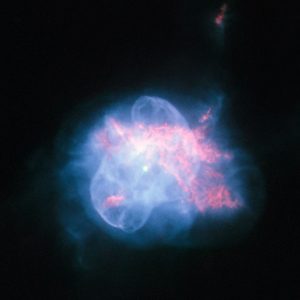NGC 6210: Una Delicata Bolla Blu
Questa straordinaria e curiosa nebulosa planetaria, NGC 6210, si trova a circa 6500 anni luce di distanza, nella costellazione di Ercole. È stata scoperta nel 1825 dall’astronomo tedesco Friedrich Georg Wilhelm Struve .
NGC 6210 rappresenta l’ultimo saluto di una stella leggermente meno massiccia del nostro Sole, ormai nella fase finale del suo ciclo di vita. I molteplici gusci di materiale espulso dalla stella morente formano una sovrapposizione di strutture con diversi gradi di simmetria, conferendo a NGC 6210 una forma insolita e suggestiva.
L’immagine mostra la regione interna della nebulosa planetaria con notevole dettaglio. La stella centrale è circondata da una sottile e delicata bolla blu abbellita da una tenue struttura filamentosa. La bolla si sovrappone ad una formazione asimmetrica rossastra, in cui sono chiaramente visibili cavità, filamenti e pilastri gassosi.
[ Barbara Bubbi ]
https://www.spacetelescope.org/images/potw1026a/
Credit: ESA/Hubble and NASA

Lascia un commento